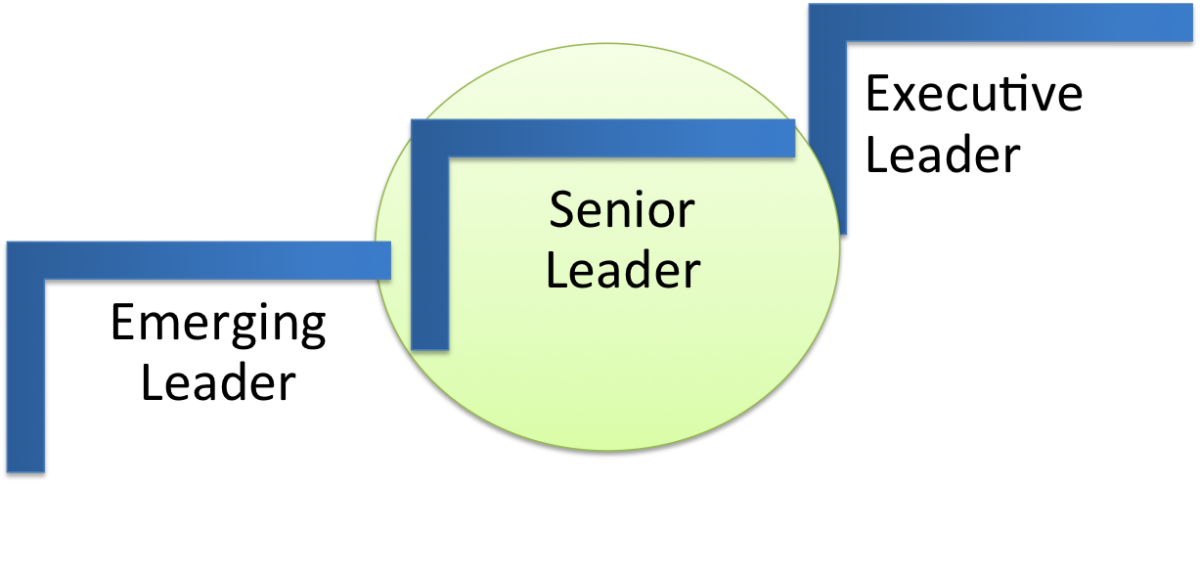My wife Rachel and I have an 8- month old. During Rachel’s 9 months of pregnancy, everyone kept saying to us – “everything is going to change.” Frankly, that “advice” wasn’t helpful. It didn’t help me understand how things would be different as a father and as a parent. As a result, I wasn’t able to take any actionable steps based on those generic words of wisdom.
The same can be said of the transition into senior leadership in many organizations. You know it’s going to be different. You know you’ll have more responsibilities. And, that’s not very helpful.
Before we explore some of the key mindset shifts needed to successfully avert the hay day I mentioned Peter will wreak in my last post, let’s take look at how senior leadership is different.
Anticipate Increased Complexity in your Senior Leadership Position
The first difference is simply the complexity of a senior leadership role.
- For the first time, many senior leaders are often asked to work on multiple teams. For example, they might lead the HR Function within the organization and also be on the CEO’s leadership team. The challenge is that leaders are expected to be fully engaged members of the leadership team, but they are usually rewarded based on the success of the function that they lead. Instead of being collaborative with their other highly successful peers, the relationships are often competitive.
- The scope of the role is usually significantly different. A senior leader may run multiple teams, have to deal with global and cross cultural issues, and be responsible for a more diverse workforce. But the real challenge behind all of those surface issues is that that the senior leader will often find herself responsible for areas in which she may not have technical expertise. For example, the senior leader might have been incredibly successful leading a sales team, and now finds herself responsible for both sales and service.
- Finally, there is a much broader spectrum of constituents that senior leaders have to engage with. It’s not just the team that they lead anymore. It’s the executive leaders to whom they are accountable. It’s the managers underneath who are looking for direction and feedback. And, most often overlooked, the network of peers who become critically important to a senior leader’s success.
Foresee the Consequences of Leadership Responsibility
The second major way in which senior leadership is different, is what I call consequence.
- All of a sudden all eyes are on the senior leader. People watch everything a senior leaders does and does not do. The impact of what he or she says – what is criticized and rewarded – has a significant consequence that senior leaders often underestimate. I was talking to a senior leader recently, and he was curiously reviewing the user interface that a designer was creating. He simply asked a question about the rationale for one of the design changes. A week later, the entire interface was redesigned based on the assumptions that the designer made about the senior leader’s question. The positional power and impact that senior leaders have is powerful…and often underestimated.
- Additionally, there is greater consequence to the responsibilities owned by a senior leader. In the past, the senior leader might have had a voice to “chime in on key decisions.” Now, he or she may have full responsibility for those decisions. To make that even more complicated – those decisions often have to be made in the face of ambiguity and imperfect information. And, the decisions have a much broader impact on a larger part of the organization. More lives, jobs,and people depend on the senior leader’s plans, decisions, and ability to execute. That’s a lot of pressure.
Consideration for the Future of your Company and Industry
The third major difference is what I call consideration – consideration for the future. We expect our senior leaders to think longer-term and to take a broader perspective. But, as they do that, their distance to the front line of the business has grown. They are typically further from the manufacturing line or from the people who touch their customers the most.
Senior leadership is different than at the emerging leader level. What have you noticed in your organization?
And, stay tuned for a discussion on a key mindset shift senior leaders need to make to be successful.
READ THE REST OF THE TRANSITIONING TO SENIOR LEADERSHIP SERIES:
Shift One:
From Smart to Aware
Leading with Awareness
Identifying an Aware Leader
Research on Emotional Intelligence
Shift Two:
From Problem to Outcome Orientation
The Importance of Peer Relationships
Leading with Strategic Vision
Building People Capacity
Shift Three:
From Compliance to Commitment
Creating Structured Communication
Explaining your Rationale
Allowing for Dialogue
Shift Four:
From Task Manager to Champion

